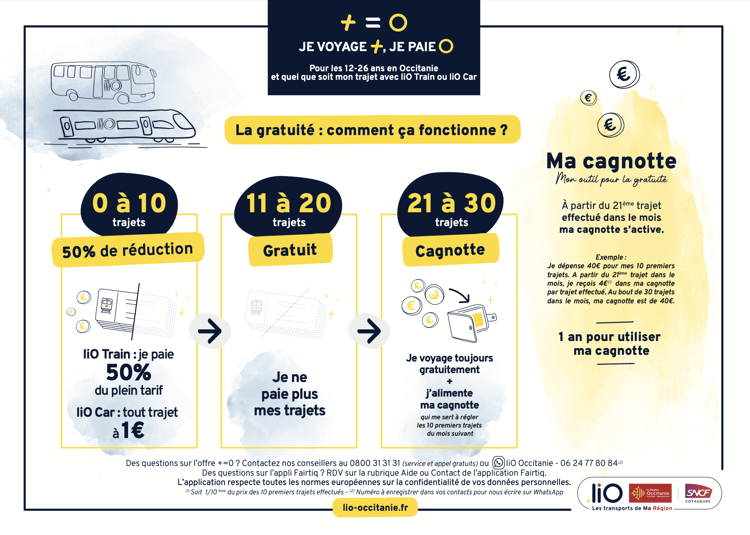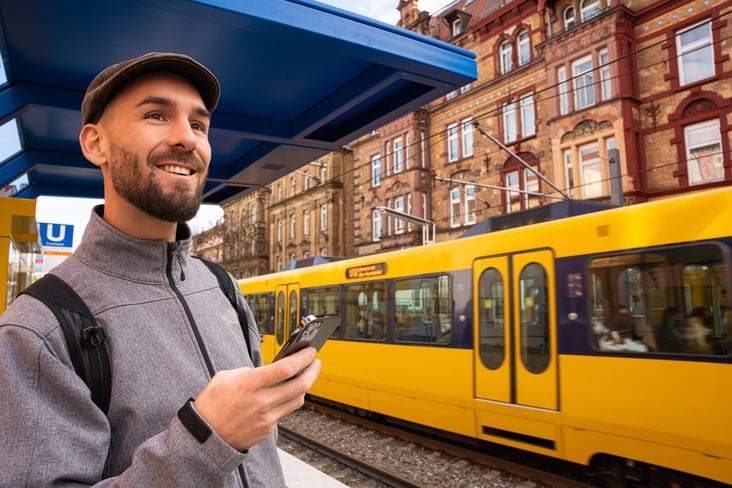Work is changing, especially for office employees. Even before the pandemic, the Monday-to-Friday, 9-to-5 routine was increasingly giving way to more flexible patterns. This is both a challenge - because commuters travel less - but also an opportunity because travel is less concentrated in morning and afternoon peak periods.
All at once, transit agencies are a) addressing the needs of captive riders who need affordable and reliable services, now more than ever, b) addressing the changing needs of commuters and c) turning their attention to attracting and retaining new customers to reduce their reliance on commuters and build the next generation of riders.
Getting fares right is a key part of meeting customers’ needs. Here are a few ways in which agencies around the world are innovating with fares to meet the needs of these diverse constituencies.
1. A big toolbox helps meet more objectives, so never say never
A fare structure remains fairly constant over time, guided by design principles - such as flat fares and free transfers. Fare levels do as well. However, promotional activities limited in time and space to focus on key opportunities can achieve specific ridership or revenue objectives - of course as long as they remain consistent with general principles.
For example, lower off-peak or weekend fares can help drive ridership and “flatten the peak”. Applied judiciously, they can help drive demand where capacity exists, draw attention to new service offerings, and lower prices where and when ability or willingness to pay are lower. This nimbleness helps better match fluctuating demand patterns and customer needs.
2. Rewards do work
When carefully targeted and designed, rewards do work. Among FAIRTIQ’s clients in Europe, some provide a bonus: ride five days in a month, get 5% off your spend, credited to you the following month. In markets that provide the bonus, the number of frequent riders is 12% higher than in markets that do not have it, and the business case is positive. People do respond to incentives when they are well marketed and respond to a need.
The Occitanie region of France wanted to increase ridership of the youth aged 16-26 group.. Together with the French railway SNCF TER and FAIRTIQ, a program was set up in which the first 10 trips cost 50%, the next 10 are free, and after 20 trips, each trip builds a 10% credit towards future trips - creating an incentive to travel over and over again. The number of riders in that age group increased by 35% in months, and the program is being extended.

Peak and off-peak fares are more common in the Asia-Pacific region. In Singapore: tap in before 7:45, get 50 cents off your fare. Sydney offers a more traditional 30% outside of both AM and PM peaks, weekdays only. Melbourne offers FREE rides on metropolitan trains when tapping on and off (i.e. done travelling) before 7:15am - it is expected that early birds will also travel early in the afternoon, but at full-price. As a result, it’s just another way to provide 50% off peak travel.
An agency in Switzerland is considering off-peak rewards to spread demand over the course of the day: ride 5 times off-peak this month, get 30% off-peak trips next month.
3. Experience yields clearer insights than models
Transit agencies tend to want to know precisely the financial impact of fare changes. The precise impact is even harder than before the pandemic since models based on 2016 surveys or 2019 ridership figures do not reflect today’s world. Depressed ridership is the perfect impetus to experiment, but patience is needed since the desired bump in ridership can be slow to ramp up. Immediate revenue shortfalls from discounts can make fare trials look costly at first, before the ridership materializes.
In our experience, marketing activities sustained over time are necessary to effect change, especially if riders don’t receive immediate communications about the cost of their trips. In the meantime, financial backstops above and beyond regular agency budgets are essential to mitigate short-term financial risks inherent to experimentation.
4. Capping is a great foundation to build on - let’s build on it
Capping is a hot topic in the transit industry the world over. Riders love not having to lend their money to a transit agency. They also love not having to compute how many trips they might take this month - how many shifts they might get, how many times their “hybrid” work policy might call them to the office. Capping takes the guessing out of the equation, and is such a great tool, that it gains to be known better.
Capping doesn’t need to be hard
Capping is traditionally a “hard” ceiling after which customers no longer pay: for example, past $100 in a given month, all subsequent trips are free. A-Welle in Aargau, Switzerland, worked with FAIRTIQ on a “soft” cap. After a set amount, customers keep paying for their trips, but their additional spending goes to a credit, available the following month. This way, they are encouraged to keep riding. Read about it here.
Capping can apply to multiple time spans
Capping is frequently mentioned as a replacement for monthly passes. But caps can be set for different time spans, allowing customers to receive price protection, even if their usage is uneven through the month. For example, riders can receive a daily cap, a weekly and a monthly cap - all applied as the customer rides, without the need to opt in. The Nouvelle Aquitaine region of France and the French railway SNCF tested "Flexter", a tiered system of caps including weekly, 20-ride, 30-ride and monthly caps - fares are optimized to the rider’s actual usage. The region and SNCF TER now plan to expand the policy to the entire region.

Capping facilitates regional travel
Capping can make multi-agency travel easier. Instead of harmonizing each fare or discounting each connecting trip, multi-agency caps can help provide relief for heavy users over a longer period. In the following example, a rider would continue to pay two single tickets between two municipalities, but a heavy user would pay less than purchasing two separate passes or paying up to two different caps.
Agencies must agree on revenue allocation rules when riders ride for free above the cap, and again, a financial backstop set aside to try multi-agency caps can help mitigate risks for agencies.

Capping can help reduce the cost of short-distance trips
Fare-by-distance has been controversial because of its potential impact on riders - especially low income - who have no choice but to ride long distances to and from work or school. A growing number of German jurisdictions are looking at e-Tarife or e-fares - a new type of distance-based fares.

- The base fare is significantly lower, which makes short trips less expensive. A large number of low-income riders also ride short distances.
- A per-kilometre rate is applied
- A per-trip cap can be provided to ensure that no single trip costs more than a certain amount.
- A daily cap is generally provided as well (and can be augmented with a weekly or monthly cap). The daily cap can vary by distance (e.g. small, medium or large)
- This is facilitated by a check-in, check-out smartphone application that captures the origin and destination of the trip. Parallel sales channels with a range of alternative but still attractive products are maintained for users who cannot or will not use smartphones.
- Munich example:
- Basic price 1.10 € / concessions 1.00 €
- Validity 60 minutes
- 0.30 € per km / concessions 0.20 €
- Daily cap 7.90 € or 11.90 € based on distance travelled

With eezy, North Rhine Westphalia, Germany’s largest state with 18 million residents, went further and leverage e-fares to harmonize fares among its four transport associations, while letting them set actual fare levels. Each association sets its base fare, per-km fare and daily cap, and a statewide cap was also agreed upon. The state government set aside a €100-million backstop to mitigate revenue risk as the program is rolled out.

More information on German fare innovation and their applicability is discussed in this blog post, with reference materials. Article on German e-fares by Mobilité consultants (machine translation).
Putting it all together
Pricing is hard to get right, in any industry - let alone one that must respond to so many constraints and expectations. For agencies, it can have significant impacts on revenue, which can be difficult to predict. Customers want logical, legible and transparent pricing and that mobility only takes up a reasonable share of their monthly budget. Governments should keep their ridership and modal shift objectives in mind and provide the right governance foundation, financial tools and autonomy for agencies to deliver them.
The current crisis is an opportunity for reinvention, and now is the time to experiment nimbly while setting the stage confidently for a future transit system that enhances the quality of life of everyone.
Want to learn more about FAIRTIQ? Get in touch today:




.png?width=732&name=image%20(2).png)




Share